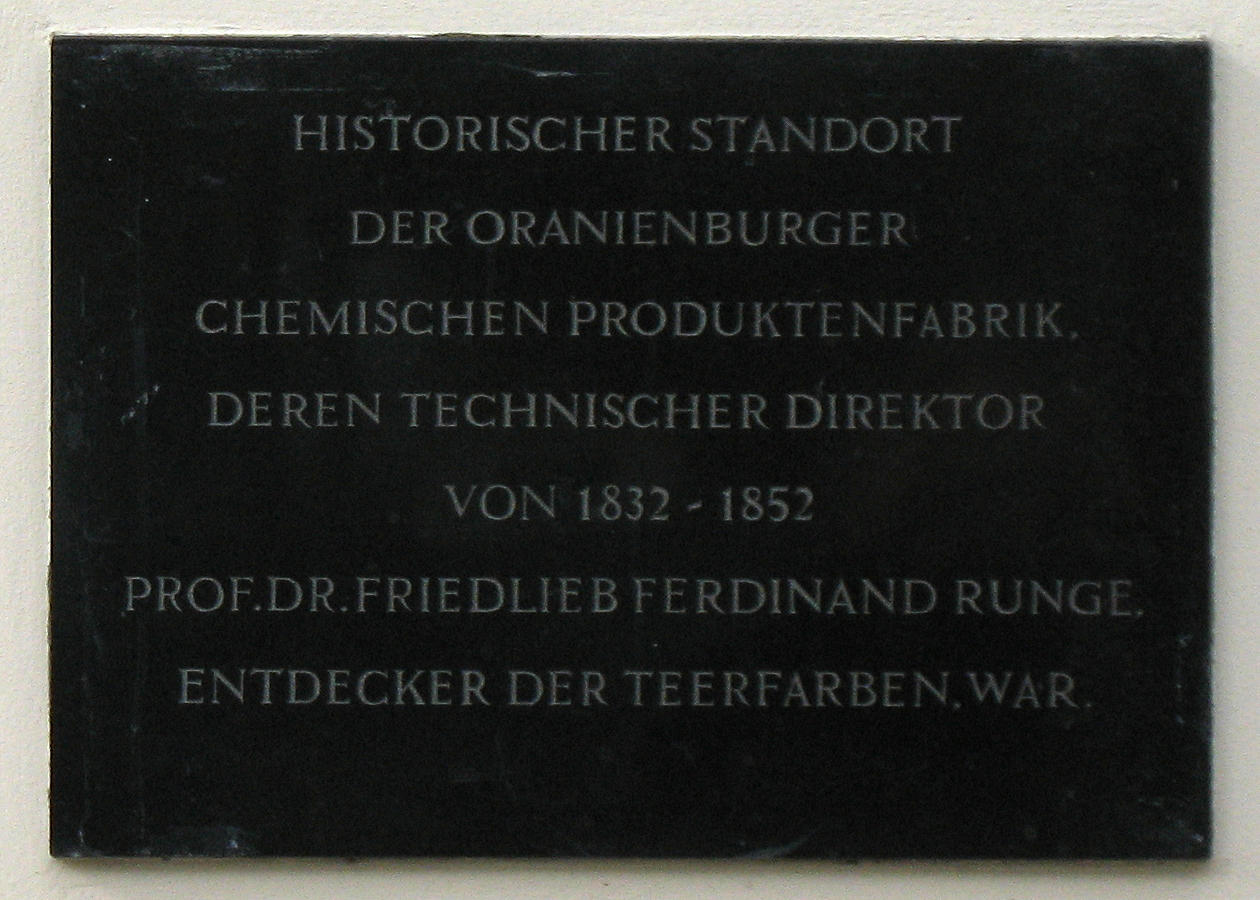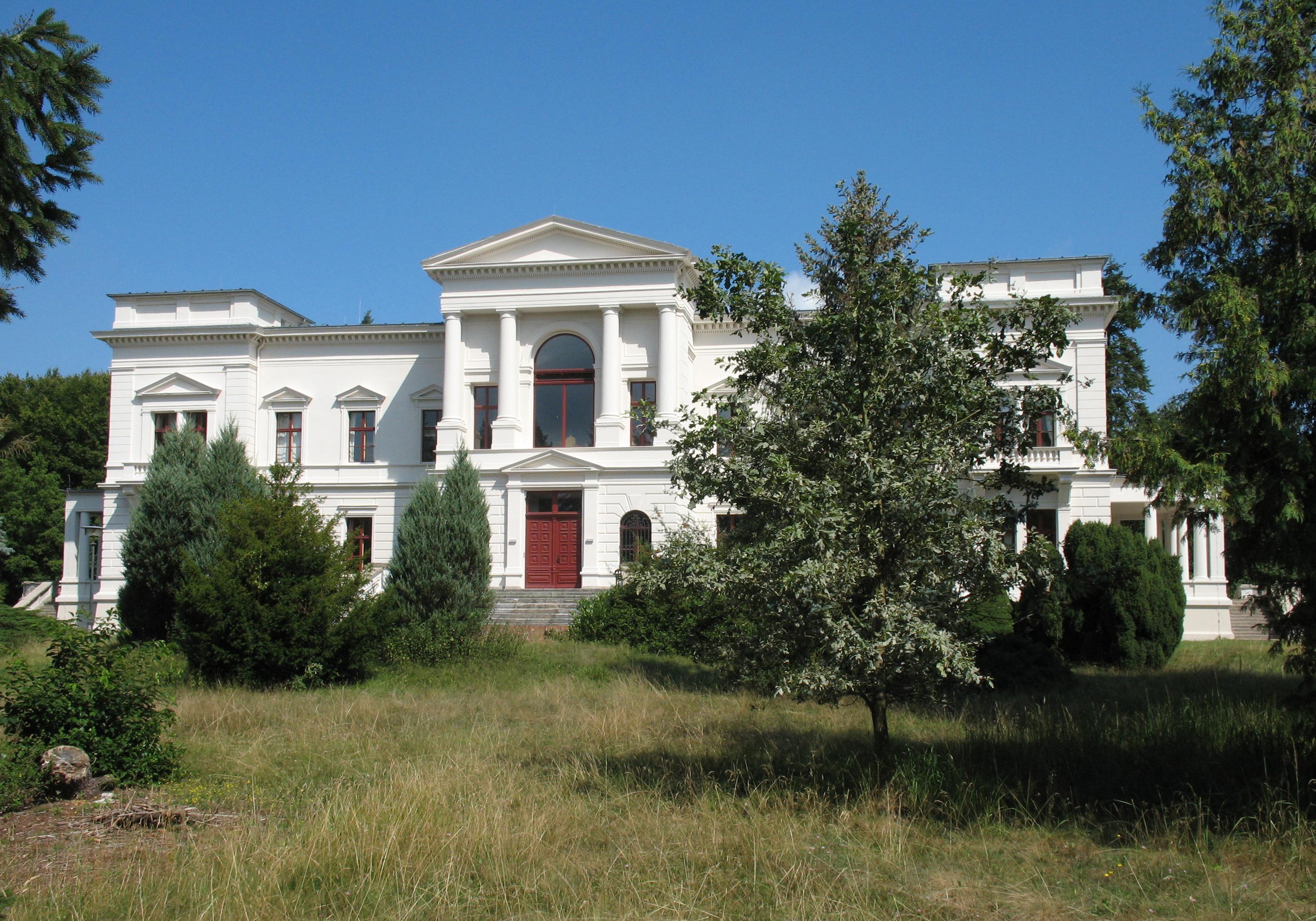|
Oberhavel
Oberhavel is a ''Kreis'' (district) in the northern part of Brandenburg, Germany. Its neighbouring districts are (clockwise from the north): Mecklenburg-Strelitz in Mecklenburg-Western Pomerania, the districts of Uckermark and Barnim, the ''Bundesland'' of Berlin, and the districts of Havelland and Ostprignitz-Ruppin. Geography The district is located on the upper course of the Havel river from its source to the outskirts of Berlin. The north is characterised by many lakes including the Großer Stechlinsee, which is well known thanks to a novel by Theodor Fontane called ''Der Stechlin''. History The district was created on 6 December 1993 through the merging of the old Gransee and Oranienburg districts. Coat of arms The coat of arms shows the eagle as the symbol of Brandenburg in the upper part. In the lower half are two flying swans on green background representing nature with many lakes. The coat of arms was unofficially used by the precursor district of Oranienburg before the ... [...More Info...] [...Related Items...] OR: [Wikipedia] [Google] [Baidu] |
Fürstenberg/Havel
Fürstenberg () is a town in the Oberhavel district, Brandenburg, Germany. Until 1919, Fürstenberg was part of the former Grand Duchy of Mecklenburg-Strelitz Geography Fürstenberg is situated on the River Havel, south of Neustrelitz, and north of Berlin. The city lies at the southern edge of the Mecklenburg Lake District and is framed by the Röblinsee, Baalensee, and Schwedtsee lakes. The River Havel splits into several channels as it flows through the town, one of which contains a lock used by vessels navigating the river. The original town site was situated on an island between these channels. Districts of Fürstenberg Fürstenberg includes nine areas, named for former villages that are now mostly farmland or little more than a church: * Altthymen * Barsdorf * Blumenow * Bredereiche * Himmelpfort * Steinförde * Ravensbrück * Tornow * Zootzen Fürstenberg Palace North from the center of the city is Fürstenberg Palace, which was built between 1741 and 1752 by the ... [...More Info...] [...Related Items...] OR: [Wikipedia] [Google] [Baidu] |
Birkenwerder
Birkenwerder is a municipality in the Oberhavel district, in Brandenburg, Germany. Geography Birkenwerder is situated in the south of Oberhavel. The northern border of Berlin is 3 kilometres away. Birkenwerder shares his border with Oranienburg in the north, Mühlenbecker Land in the east and Hohen Neuendorf in the south and in the north. In the centre of Birkenwerder is the river Briese. In the west of Birkenwerder it empties in the River Havel. ''Briese'' and ''Lindenhof'' are districts () of Birkenwerder. More than 50% of the area consists of forest. There are many forest roads, also along the river ''Briese''. Birkenwerder is connected to the motorway A 10 (Bundesautobahn 10), the B 96 (Bundesstraße 96 The Bundesstraße 96 (B 96) is a federal highway in Germany. It begins in Zittau in Saxony, close to the border triangle between Germany, Poland, and the Czech Republic, heads north through Berlin and ends in Sassnitz on the island of Rügen in th ...) and the B 96a which end ... [...More Info...] [...Related Items...] OR: [Wikipedia] [Google] [Baidu] |
Velten
Velten is a town in the Oberhavel district of Brandenburg, Germany. It is situated 10 km southwest of Oranienburg, and 24 km northwest of Berlin. History In 1905 Velten had 38 stove factories that delivered 100,000 tiled stoves to Berlin, making Velten Germany's biggest stove-manufacturer. Demography File:Bevölkerungsentwicklung Velten.pdf, Development of Population since 1875 within the Current Boundaries (Blue Line: Population; Dotted Line: Comparison to Population Development of Brandenburg state; Grey background: Time of Nazi rule; Red background: Time of communist rule) File:Bevölkerungsprognosen Velten.pdf, Recent Population Development and Projections (Population Development before Census 2011 (blue line); Recent Population Development according to the Census in Germany in 2011 (blue bordered line); Official projections for 2005-2030 (yellow line); for 2020-2030 (green line); for 2017-2030 (scarlet line) Personality * Erna Gersinski (1896-1964), resist ... [...More Info...] [...Related Items...] OR: [Wikipedia] [Google] [Baidu] |
Oranienburg
Oranienburg () is a town in Brandenburg, Germany. It is the capital of the district of Oberhavel. Geography Oranienburg is a town located on the banks of the Havel river, 35 km north of the centre of Berlin. Division of the town Oranienburg consists of nine districts: * Friedrichsthal * Germendorf * Lehnitz * Malz * Oranienburg * Sachsenhausen * Schmachtenhagen * Wensickendorf * Zehlendorf History Originally named Bötzow, the town of Oranienburg dates from the 12th century and was first mentioned in 1216. Margrave Albert the Bear (ruled 1157–1170) allegedly ordered the construction of a castle on the banks of the Havel. Around the castle stood a settlement of traders and craftsmen. In 1646, Friedrich Wilhelm I of Brandenburg married Louise Henriette of Orange-Nassau (German: ''Oranien-Nassau''). She was so attracted by the town of Bötzow that her husband presented the entire region to her. The princess ordered the construction of a new castle in the Dutch style and ... [...More Info...] [...Related Items...] OR: [Wikipedia] [Google] [Baidu] |
Großwoltersdorf
Großwoltersdorf is a municipality in the Oberhavel district, in Brandenburg, Germany Germany,, officially the Federal Republic of Germany, is a country in Central Europe. It is the second most populous country in Europe after Russia, and the most populous member state of the European Union. Germany is situated betwe .... Demography References Localities in Oberhavel {{Brandenburg-geo-stub ... [...More Info...] [...Related Items...] OR: [Wikipedia] [Google] [Baidu] |
Gransee
Gransee ()''Duden - Das Aussprachewörterbuch, 7. Auflage (German)'', Dudenverlag, is a town in the Oberhavel district, in Brandenburg, Germany. It is situated 20 km south of Fürstenberg/Havel, and 55 km northwest of Berlin. An important monument in the centre of town is the cast-iron and stone Memorial to Queen Luise (Luisendenkmal), which was designed by the German architect Karl Friedrich Schinkel in the neo-gothic style. A sport airfield is situated in the eastern part of the town. It is one of the major drop zones in the vicinity of Berlin. Demography Local council The local council has 19 members: * Christian Democratic Union: 5 seats * Social Democratic Party of Germany: 5 seats * The Left: 3 seats * Voters association Gransee: 3 seats * Voters association Citizens for Gransee: 2 seats * Mayor: 1 seat Local elections in Brandenburg May 25, 2014 Photogallery File:Gransee_Wartturm.jpg, Watch tower File:St_marien_gransee.jpg, St. Mary's Church in Gransee Fi ... [...More Info...] [...Related Items...] OR: [Wikipedia] [Google] [Baidu] |
Oberkrämer
Oberkrämer is a municipality in the Oberhavel district, in Brandenburg, Germany. An experimental farm of wind turbines existed between 1941 and 1945 on the 50 m high Matthias mountain in the area. Subdivisions Oberkrämer consists of formerly separate municipalities, which as of 31 December 2001 merged with the new municipality of Oberkrämer. On 27 September 1998, the municipalities of Eichstädt, Neu-Vehlefanz and Vehlefanz merged into the new municipality of Oberkrämer. On 31 December 2001, the municipalities of Bärenklau, Bötzow, Marwitz and Schwante were merged into the municipality of Oberkrämer. Demography File:Bevölkerungsentwicklung Oberkrämer.pdf, Development of population since 1875 within the current Boundaries (Blue Line: Population; Dotted Line: Comparison to Population development in Brandenburg state; Grey Background: Time of Nazi Germany; Red Background: Time of communist East Germany) File:Bevölkerungsprognosen Oberkrämer.pdf, Recent Popula ... [...More Info...] [...Related Items...] OR: [Wikipedia] [Google] [Baidu] |
Mühlenbecker Land
Mühlenbecker Land is a municipality in the Oberhavel district, in Brandenburg, Germany. History The municipality shared its borders partly with the former West Berlin, and so during the period 1961-1990 it was separated from it by the Berlin Wall. File:Muehlenbecker_See.jpg, Lake "Mühlenbecker See" File:Muehlenbeck_Tegeler_Fliess.jpg, Tegeler Fließ Demography File:Bevölkerungsentwicklung Mühlenbecker Land.pdf, Development of population since 1875 within the current Boundaries (Blue Line: Population; Dotted Line: Comparison to Population development in Brandenburg state; Grey Background: Time of Nazi Germany; Red Background: Time of communist East Germany) File:Bevölkerungsprognosen Mühlenbecker Land.pdf, Recent Population Development and Projections (Population Development before Census 2011 (blue line); Recent Population Development according to the Census in Germany A national census in Germany (german: Volkszählung) was held every five years from 1875 to 1910. A ... [...More Info...] [...Related Items...] OR: [Wikipedia] [Google] [Baidu] |
Löwenberger Land
Löwenberger Land is a municipality in the Oberhavel district, in the German state of Brandenburg, about 50 km north of Berlin. Overview Established on December 31, 1997 it consists of 15 villages: Löwenberg was first mentioned in a 1269 deed, when it was acquired by the Bishopric of Brandenburg from the Brandenburg Margraves. A Gothic fieldstone church was erected in the 13th century. The church and large parts of the village were devastated by a fire in 1808. In 1877 Löwenberg gained access to the new Prussian ''Nordbahn'' railway line from Berlin to Neubrandenburg. The municipality is known for (''Schloss Liebenberg'') built in 1745, the former residence of Philipp, Prince of Eulenburg (1847–1921) who from 1886 on held a homophile political salon - the Liebenberg Circle - here. Members included the Berlin military commander Kuno von Moltke, the later Chancellor Bernhard von Bülow and Emperor Wilhelm II. The circle broke up in 1907 with the Harden-Eulenburg A ... [...More Info...] [...Related Items...] OR: [Wikipedia] [Google] [Baidu] |
Leegebruch
Leegebruch is a municipality in the Oberhavel district, in Brandenburg, Germany. Demography File:Bevölkerungsentwicklung Leegebruch.pdf, Development of Population since 1875 within the Current Boundaries (Blue Line: Population; Dotted Line: Comparison to Population Development of Brandenburg state; Grey Background: Time of Nazi rule; Red Background: Time of Communist rule)) File:Bevölkerungsprognosen Leegebruch.pdf, Recent Population Development and Projections (Population Development before Census 2011 (blue line); Recent Population Development according to the Census in Germany A national census in Germany (german: Volkszählung) was held every five years from 1875 to 1910. After the World Wars, only a few full population censuses have been held, the last in 1987. The most recent census, though not a national census, wa ... in 2011 (blue bordered line); Official projections for 2005-2030 (yellow line); for 2014-2030 (red line); for 2017-2030 (scarlet line) Reference ... [...More Info...] [...Related Items...] OR: [Wikipedia] [Google] [Baidu] |
Glienicke/Nordbahn
Glienicke/Nordbahn is a municipality in the Oberhavel district, in Brandenburg, Germany. It is located right north of Berlin. Situation Glienicke/Nordbahn is located on the northern outskirts of Berlin. The addition "Nordbahn" (Northern Railway) is based on the proximity to the 19th century-built railway line Berlin-Stralsund, the Prussian Northern Railway. The town is bordered to the south and west by the district Reinickendorf of Berlin (localities Frohnau, Hermsdorf (Berlin) and Lübars) and Schönfließ, Mühlenbecker Land. Between 1961 and 1990 was situated at the eastern border of the Berlin Wall. The village is a typical Angerdorf (meadow) of the Mark Brandenburg. The highest point of the village is the "Langeberg" with 55 m.ü.NN. From Glienicke there are 10 Miles (17 km) to Oranienburg, 25 Miles (44 km) to Potsdam, 180 Miles (270 km) to Stralsund near the Baltic See, 180 Miles (271 km) to Hamburg and 90 Miles (150 km) to Cottbus. History * Fi ... [...More Info...] [...Related Items...] OR: [Wikipedia] [Google] [Baidu] |
Zehdenick
Zehdenick is a town in the Oberhavel district, in Brandenburg, Germany. It is situated on the river Havel, southeast of Fürstenberg/Havel, and north of Berlin (centre). Since 31 July 2013, the city has the additional appellation "Havelstadt". Geography Zehdenick is located about 60 km north of Berlin on the Havel. It forms the northern starting point of the natural region of the Zehdenick-Spandauer Havelniederung. East extends the Schorfheide-Chorin Biosphere Reserve. The urban area belongs mainly to the historical landscape Uckermark. The subdivisions Marienthal and Ribbeck pertain to the Ruppiner Land, Mildenberg and Zabelsdorf to the Land Löwenberg. Zehdenick has a share in the ''Naturschutzgebiet'' Kleine Schorfheide. Subdivision The urban area of Zehdenick next to the core city Zehdenick includes 13 villages: Besides these ''Ortsteile'' (districts), there are several smaller inhabited places: Amt Mildenberg, Ausbau (District Ribbeck), Ausbau (Core city Zehdenick), ... [...More Info...] [...Related Items...] OR: [Wikipedia] [Google] [Baidu] |





